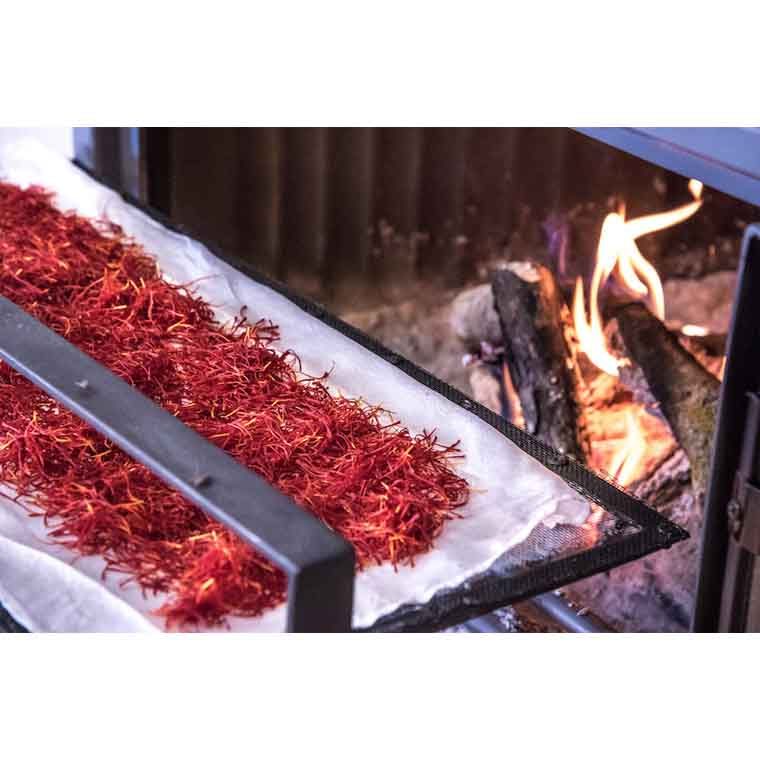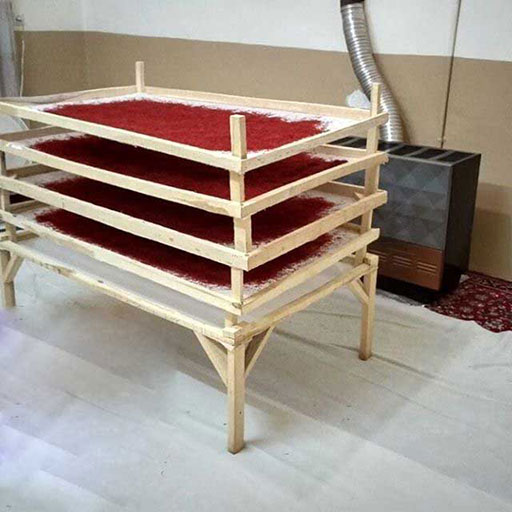
- Tray Drying: Saffron is spread on flat trays and placed near a heat source like a heater. The room should maintain a temperature of around 70°C and proper ventilation to ensure effective drying.
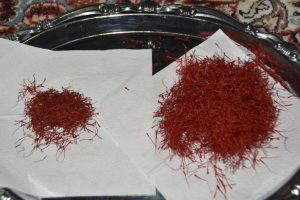
- Drying on a Heater: A simpler method involves placing saffron above a heater. By adjusting the heater flame to the minimum and keeping saffron overnight, the drying process occurs.
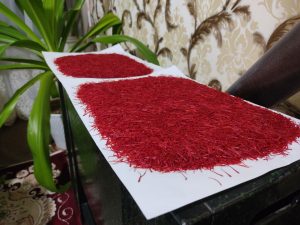
- Sun Drying: Saffron is placed on trays or clean cloths under direct sunlight. This method depends on weather conditions such as humidity and the likelihood of rain.
Traditional Iron Drying: This method uses two metal plates to press the saffron and reduce its moisture. If the moisture is not sufficiently reduced by temperature and only through pressure, it can damage the stigmas and lower saffron quality.
Drying Duration: The time required to dry saffron and eliminate moisture depends on the method used. Moisture levels also vary depending on the type of saffron (pistil, root, or stigma).
Advantages and Disadvantages of Traditional Methods:
- Advantages: Lower cost for small-scale and temporary use.
- Disadvantages: Longer drying time, higher risk of errors and quality loss, potential color changes, and challenging moisture and factor control.
- Mechanized Drying Methods
Mechanized Drying Devices: This advanced method involves placing saffron in specialized trays within a drying machine. Covered with a silk cloth, saffron dries quickly while maintaining high quality.
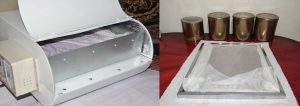
Quality Characteristics: According to the Iranian national saffron standard, dried saffron should have a moisture content of about 5 to 10 percent. Dried saffron should be brittle when bent, with no flexibility.
Best Drying Method
The best saffron drying method should effectively preserve crocin, picrocrocin, and safranal present in the stigmas, minimizing negative effects of temperature and extended time. Mechanized methods are preferable due to their precise condition control, making them better for maintaining saffron quality.
